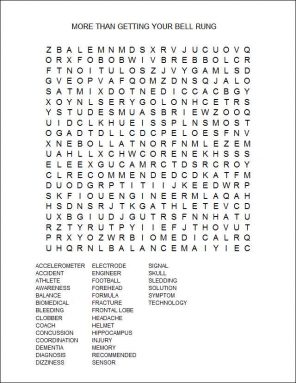Concussion: More than ‘getting your bell rung’
This common brain injury can cause serious — and lasting — damage
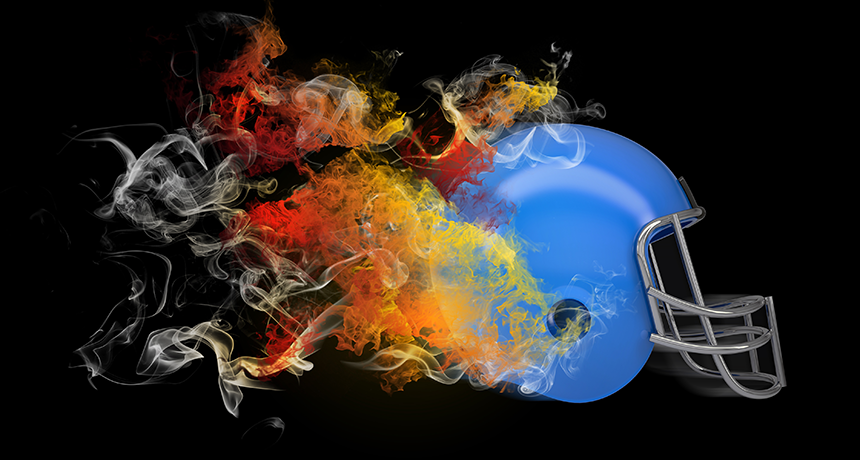
Football and other contact sports can lead to smashups that damage muscles, bone — and the brain. And that brain damage may be deceptively serious and long-lasting, new data show.
cherezoff/iStockphoto
Just before his twelfth birthday, Jake Hoetmer climbed onto a sled with a friend. They sped down Hoetmer’s driveway — a popular sledding hill in his Oakton, Va., neighborhood. But they lost control. The sled careened off the drive, straight into a tree. If you ask Hoetmer about the event, he won’t be able to fill in details. He simply doesn’t remember it.
In Houston, Texas, 14-year-old Matthew Hall ran a kickoff drill in football practice. An opposing player sent him flying backward. As Hall landed, his head snapped back against the ground. He left the field light-headed and groggy. Headaches and dizziness plagued him for weeks.
Both Hoetmer and Hall suffered concussions. This type of brain injury is caused by sudden, jarring movement of the head. Concussions can occur any time the head moves quickly or comes to a rapid stop. Even minor concussions can cause any number of problems.
People with concussions experience all types of symptoms, including forgetfulness, headache, dizziness, fuzzy vision and sensitivity to noise. Some people, like Hoetmer, vomit after a concussion. Others, like Hall, become irritable or have trouble concentrating. In Hall’s case, those symptoms lasted for several weeks. Severe concussions can even knock someone unconscious. People in this sleeplike state are not aware of their surroundings and experiences.
Symptoms of a concussion can last for less than a day or persist for weeks — even months. Two or more concussions put a person at risk of developing life-long problems. These include difficulty with balance, coordination and memory. And concussions can happen in all kinds of situations: sports, car or bike accidents, even slipping and falling. In fact, concussions are so common, nearly 250,000 kids and teens were treated for the injury in 2009 alone. There are likely many, many more that went unreported.
To help reduce the number of these all-too-common injuries, scientists have begun to study concussions in detail. They’re using the latest technology to figure out whether one has occurred. They’re getting the word out about the need to seek treatment after a head injury. And they’re working toward safer, more protective helmets.
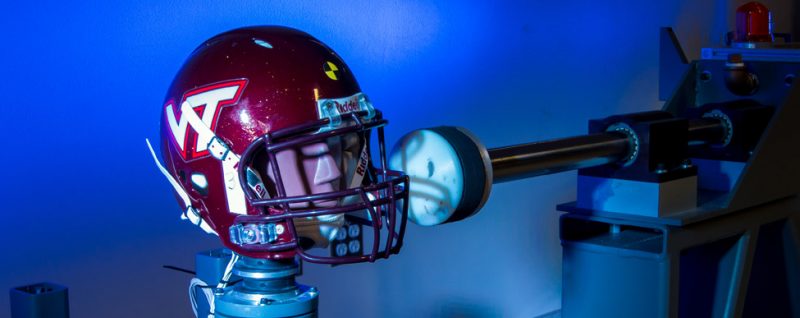
Silent signals
Inside the brain, billions of cells called neurons (NUR-ons) are hard at work. Neurons have a fat cell body with a long, wirelike structure on one side. These structures are called axons. Just like a wire carries electricity, an axon carries electrical signals. Those signals tell other parts of your brain, or specific parts of your body, what to do. Without neurons to communicate information from your eyes to your brain, you wouldn’t be able to understand — or even see — the words in this sentence.
All those neurons in the brain form a control center for the body. That’s why the brain is protected by the skull. It forms a solid barrier between that control center and anything that might harm it. Inside the skull, a cushion of fluid surrounds the brain, further protecting it. This fluid keeps the brain from banging into the skull during normal activity. But extreme head movements can be too much for that cushion to handle. When the head snaps forward, back or to the side, the skull stops moving, but the brain keeps going — smack against the bone.
Even more problematic than the impact itself is damage that can occur to axons inside the brain. The brain doesn’t move as one piece, explains Dennis Molfese. He’s a brain researcher at the University of Nebraska in Lincoln. Different parts of the brain weigh different amounts, and heavier sections travel faster than lighter ones. That causes the brain to stretch, squish and twist as it hits the inside of the skull. This can put so much strain on axons — particularly those that connect different brain regions — that some eventually die. Those cell deaths don’t happen immediately, Molfese says. That’s why some symptoms of a concussion — like long-term memory loss — may not emerge until days or weeks after the initial injury.
Concussions per year linked to childhood activities
| Activity | Number of emergency room visits |
| Bicycles | 23,405 |
| Football | 20,293 |
| Basketball | 11,506 |
| Playground | 10,414 |
| Soccer | 7,667 |
| Baseball | 7,433 |
| All-Terrain Vehicle | 5,220 |
| Hockey | 4,111 |
| Skateboarding | 4,408 |
| Swimming/Diving | 3,846 |
| Horseback Riding | 2,648 |
This table shows the estimated number of concussions sustained by patients between the ages of 5 and 18 in the United States in 2007. These concussions are the result of sport or recreational activities and based on visits to the emergency room. Credit: Valasek and McCambridge, 2012
Repeated concussions in professional athletes — especially in boxers and football players —have even been linked with serious permanent memory problems, even dementia. A study published in January 2013 offers some clues that may explain why.
It used brain scans to reveal for the first time unhealthy protein deposits in the brains of living football players. These men had all sustained repeated concussions. The same protein buildups also show up in people with Alzheimer’s disease, a form of dementia. Gary Small of the University of California, Los Angeles, and his coworkers found that the unhealthy deposits increased with the number of concussions a man had gotten over his athletic career.
Spying on brain chatter
Molfese and a team of other researchers want to know more about how a concussion affects the brain. To find out, they recruited female soccer players and male football players from 20 universities across the United States.
Before the sport season begins, each athlete performs a series of tests. These exams measure working memory (or the ability to remember a series of letters and numbers) and attention. Both can be affected by brain injury. Later, if the athletes are hit in the head during practice or play, they’ll undergo the tests again. The researchers compare scores from the two sets of tests to help diagnose whether a concussion has occurred — and if so, in what parts of the brain.
Before the testing begins, the researchers cover the head of each athlete with a special net made up of wires and sensors. The net’s sensors, called electrodes, pick up on electrical signals in specific parts of the brain. As the athletes complete the tests, those sensors record which parts of the brain are most active. That’s where axons are busiest sending signals.
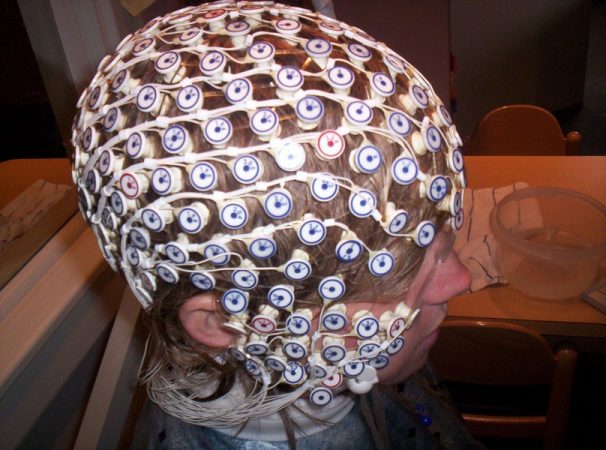
During the memory test, for example, the sensors usually record lots of activity in the hippocampus. This area deep in the brain plays a pivotal role in remembering things. But activity there remains low for up to six weeks after a concussion. Even though the hippocampus is buried deep, it can still be damaged during a concussion.
The brain region involved with attention lies closer to the surface. Called the frontal lobe, it sits right behind the forehead, next to the skull. The researchers’ tests on athletes show that this region, too, becomes less active following a concussion.
In Molfese’s attention test, participants are asked to say the name of a color. This may sound easy, but they’re not just identifying an ordinary blob of ink. Instead, they’re asked to identify the color of the ink used to spell out the name of a different color. Imagine the word green written in red ink and being asked to name the color of the ink (red, not green). Unless participants pay very close attention, they name the word before they realize the ink is a different color. Molfese and his team are finding that after a concussion, athletes take much longer to name the ink color. They also make more mistakes.
Speedier diagnoses
Molfese hopes his findings will one day allow coaches and trainers to immediately diagnose concussion. They could do this by using the nets on athletes as soon as they walk off the field. That quick test is important, because delaying a diagnosis can allow more damage to occur before treatment begins.
Moreover, “The longer you do the wrong things after concussion, the longer you’re out of play,” says Summer Ott. She’s a neuropsychologist at the University of Texas Medical Center in Houston. Scientists like Ott study how changes in the brain affect behavior.
Many people don’t see a doctor right after they’re injured. Sometimes the players, coaches or parents simply don’t recognize the signs of concussion. Ott is working hard to change this by raising public awareness of concussion symptoms.
Other times, players don’t report their symptoms because they don’t want to be taken out of a game.
That attitude — staying quiet and waiting for the symptoms to go away — needs to change, says Ott. Continuing to play with a brain injury can lead to more severe and even permanent injuries. It can also extend the time athletes will be sidelined. Ott likens ignoring a concussion to running around on a broken ankle: It lengthens healing time and increases the risk that you’ll heal improperly.
She also emphasizes the importance of wearing the right type of helmet for each sport and having it fit properly. A loose helmet, she notes, offers little protection.
Helmets: Which work best?
Helmets can guard against severe injuries, such as skull fractures or bleeding around the brain. But do they protect against concussion? Not entirely, says Ott: “There is no concussion-proof helmet.” Even so, some helmets lessen head movement, which reduces how hard the brain smacks into the skull.
How can parents, coaches and athletes find out which helmets are best? Thanks to Steven Rowson and his coworkers at Virginia Tech, a rating system now exists.
Rowson is a biomedical engineer at the Blacksburg, Va., university. There he uses science to design solutions to biological or medical problems. He and his coworkers developed the STAR system, which uses impact data and a mathematical formula to estimate how well a helmet will protect the head.
To develop the rating system, these engineers worked with the Virginia Tech football team. The researchers put sensors called accelerometers (ek SEL er AHM eh terz) inside each football helmet. These sensors measure the change in velocity — the speed in a particular direction — of the head as it bangs against the inside of the helmet. Over 10 years, they collected data as the football team practiced and played. For each head bang, the researchers recorded where the helmet had been hit, how hard it had been hit and whether the athlete had been injured.
They took those data into the laboratory to test other helmets. The engineers placed accelerometers inside each helmet and then strapped it onto a head taken from a crash dummy. Then they dropped the helmeted heads from different heights and at different angles.
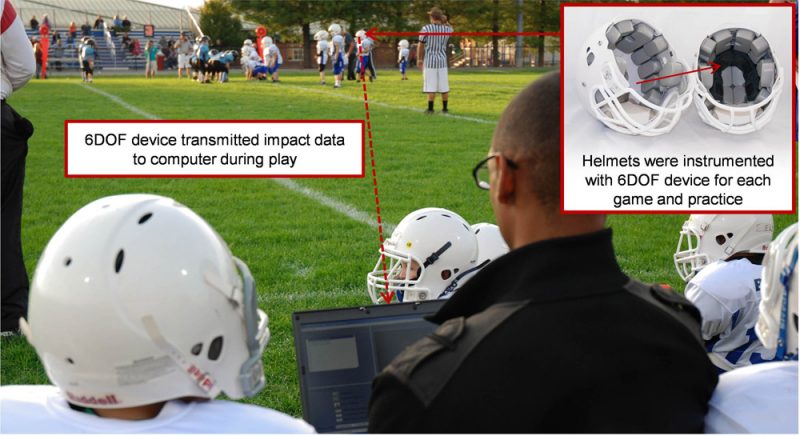
Based on these tests, the engineers gave each helmet a STAR rating. That number indicates a helmet’s ability to guard against concussion. The lower the STAR value, the better protection the helmet should offer. To make it easier for buyers, the researchers also ranked the helmets from “Best Available” to “Not Recommended.” When Virginia Tech’s players switched from a helmet with a “Marginal” rating to one considered “Very Good,” the number of concussions they experienced dropped by 85 percent.
So far, the researchers have ranked only adult helmets. But they recently started collecting impact data from young football players. College and professional athletes account for only 30 percent of all football players, Rowson notes. So the vast majority of players still lack good data on which helmets will perform well. He also plans to apply the STAR system to hockey and lacrosse helmets (but not for a few more years).
Rowson also recently started using a new piece of equipment to test helmets. Called a linear impactor, it allows him to collect a more complete set of data. Instead of dropping the helmeted dummy head, this device drives a ram into a helmet at a chosen velocity. This lets Rowson calculate both how hard the head was hit and at which angle. That last part is important, because angled hits are more likely to damage axons.
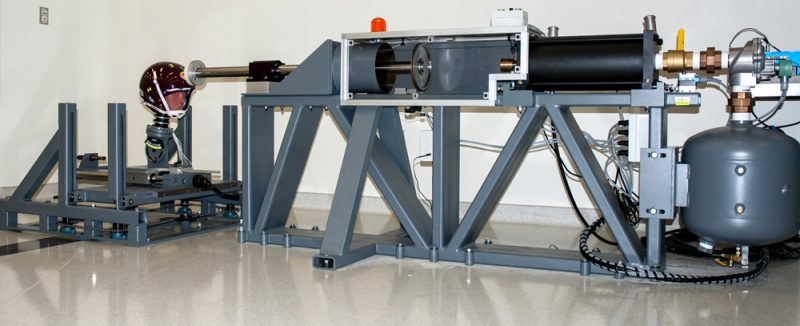
Hall, the teenage football player in Texas who suffered a concussion during practice, has already benefited from the STAR rating system. After that concussion — his first — his parents bought him a top-ranked helmet. It reduced the concussion he sustained after another head clobbering the next year. Even so, that injury left him sitting out nearly a month of the season. But with persistence on the part of researchers like Molfese, Ott and Rowson, kids can more safely pursue contact sports and other activities.
Power Words
accelerometer A sensor that measures how fast something is moving in a particular direction and how that speed changes over time.
axon A single, long extension of a neuron.
biomedical engineer Someone who applies technology to biological or medical problems.
dementia A condition of the brain marked by a worsening in the ability to think or reason.
electrode A sensor that records electrical activity in the brain.
frontal lobe The region of the brain behind the forehead that is involved in paying attention.
hippocampus A region of the brain involved with memory.
irritable Easily bothered.
neuron A cell that serves as the basic working unit of the nervous system. It carries electrical signals from and between nerves.
neuropsychologist A scientist who studies how changes in the brain affect behavior.
pneumatic Air-driven.
unconscious In a sleeplike state.
velocity The speed of an object as it travels in a particular direction.
Word Find (click here to print puzzle)
